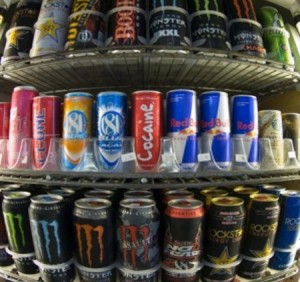 The news about energy drinks is beginning to reach the main stream media. Regardless of the size of the market most of the energy drinks are “cans full of drugs”. Nearly every day somebody is overdosing on energy drinks. This post by Sari Harrar, explains the phenomenon.
The news about energy drinks is beginning to reach the main stream media. Regardless of the size of the market most of the energy drinks are “cans full of drugs”. Nearly every day somebody is overdosing on energy drinks. This post by Sari Harrar, explains the phenomenon.
Teens and young adults spend an estimated $2.3 billion annually on energy drinks laced with caffeine and herbal stimulants. But these aggressively marketed and pricey beverages (called “drugs in a can” and “a pharmacological Molotov cocktail” by Oklahoma State University researchers in one recent report) do more than clean out their wallets.
Over 5,000 reported caffeine overdoses in recent years—46 percent in kids age 18 and younger—have been attributed to them, say University of Miami researchers in a 2011 study in the journal Pediatrics. With caffeine levels up to three to five times higher than a 12-ounce cola, these drinks may also contain rev-you-up herbal stimulants like guarana and yerba mate. Liver damage, kidney failure, respiratory disorders, agitation, seizures, psychotic problems, muscle break-down, off-rhythm heartbeats, high blood pressure, heart failure, heart attack and even death have been reported in energy drink users in Europe, the U. of Miami researchers warned. And kids taking medications for attention deficit disorders or who have diabetes or heart problems may be at extra risk.
Denmark, Sweden, Australia and Germany have partial or complete bans on their sale to kids. Last fall, Canada began requiring new warnings and stricter caffeine limits. What’s happening in the U.S.? Here’s what parents should know:
- The U.S. has no standard definition of an ‘energy drink.’ The Food and Drug Administration only sets caffeine levels on cola drinks, allowing energy-drink makers to pack their beverages with more. (The American Beverage Association has voluntary guidelines for caffeine limits and warning labels, but not all drink makers comply.) Many contain even higher levels than may be listed on the label, because herbs like yerba mate also pack considerable amounts of caffeine.
- They’re marketed aggressively to preteens and teens. Flavors like strawberry lemonade and apple cherry and slogans like “party like a rock star!” and ‘ultimate energy rush’ are just the beginning. Energy-drink websites lure kids with come-ons about bands, athletes and celebrities. Coupons and free samples get them started.
- Energy drinks don’t help performance. They made timing, coordination, alertness and concentration worse in one Oklahoma State University study of student pilots. In fact, after triggering a burst of stress hormones and feel-good brain chemicals, your energy levels plummet.
- One can isn’t one serving. Many contain 2 or even 4 servings per can—but who (especially a thirsty teen) stops at a quarter-can? Drinking the whole thing means they’ve just downed two to four times more caffeine than they’d get from a single serving.
What can you do? Talk with your kid about the downsides of these drinks. And help them save money (energy drinks can cost $2 to $4 a can) by offering bottled water, herbal iced tea (make it at home with fruity herbal tea bags, water, and a little sugar) or seltzer with juice or a squeeze of lemon.
Let us know what you’re doing—and how you feel about energy drinks marketed to kids by leaving your comments here.

